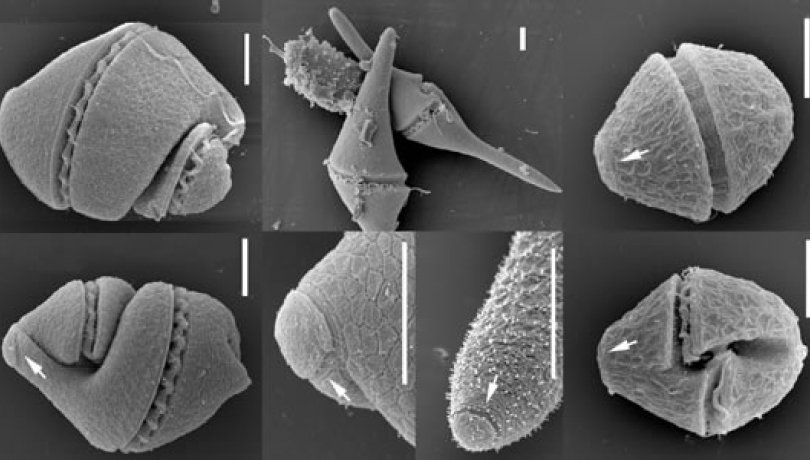Scientists at the Institut de Ciències del Mar from Barcelona (ICM-CSIC) and at the Tasmanian Museum and Art Gallery (Australia), have identified a new family of unicellular microalgae belonging to the dinoflagellates group. The new family has been called Ceratoperidiniaceae, after its first species that was described, Ceratoperidinium margalefii. The work, which has been published on-line at the Protist magazine, has been led by Esther Garcés, scientist at the CSIC, and the first author is Albert Reñé, doctoral student.

Scientists at the Institut de Ciències del Mar from Barcelona (ICM-CSIC) and at the Tasmanian Museum and Art Gallery (Australia), have identified a new family of unicellular microalgae belonging to the dinoflagellates group. The new family has been called Ceratoperidiniaceae, after its first species that was described, Ceratoperidinium margalefii. The work, which has been published on-line at the Protist magazine, has been led by Esther Garcés, scientist at the CSIC, and the first author is Albert Reñé, doctoral student. Both, in their laboratory at the ICM, are devoted to study microalgae diversity and to develop systems to control the blooms of toxic or harmful microalgae.
The new microalgae family includes dinoflagellates species that although were known, they were badly characterized. Their phylogenetic relationships were unknown and therefore they were classified within other families and genus.
One of the things that explain this is their morphology. “These microalgae have a high plasticity. Some of them show many changes along their lives: they have some retractile elongations that others don’t, which make them to look very different”, points out Albert Reñé.
Scientists have observed the microalgae in vivo and have concluded that, in spite of the differences, they share certain common characters. Each one of the microalgae was individually studied in order to see their morphology. Afterwards, each cell was isolated from the samples and genetically sequenced, which has enabled scientists to study the genetic similarities between the different microalgae.
The microalgae samples have been taken from different locations from the Catalan and Australian coast during different seasons.
The diversity of marine microorganisms is huge and only a small part of them is known. In the sea there is a high diversity of protists, eukaryotes such as the microalgae, which cannot be classified within the other three eukaryote kingdoms: Funghi, Animals and Plants. Nowadays, around 100.000 species of protists are known but scientists think this figure could be several orders of magnitude higher.
Esther Garcés finishes: “We don’t know how many species there are, where they live and how. With sequencing tools we can characterise the tree of life and understand the role these organisms play in the environment”
Paper published in Protist: http://www.sciencedirect.com/science/article/pii/S1434461013000643#